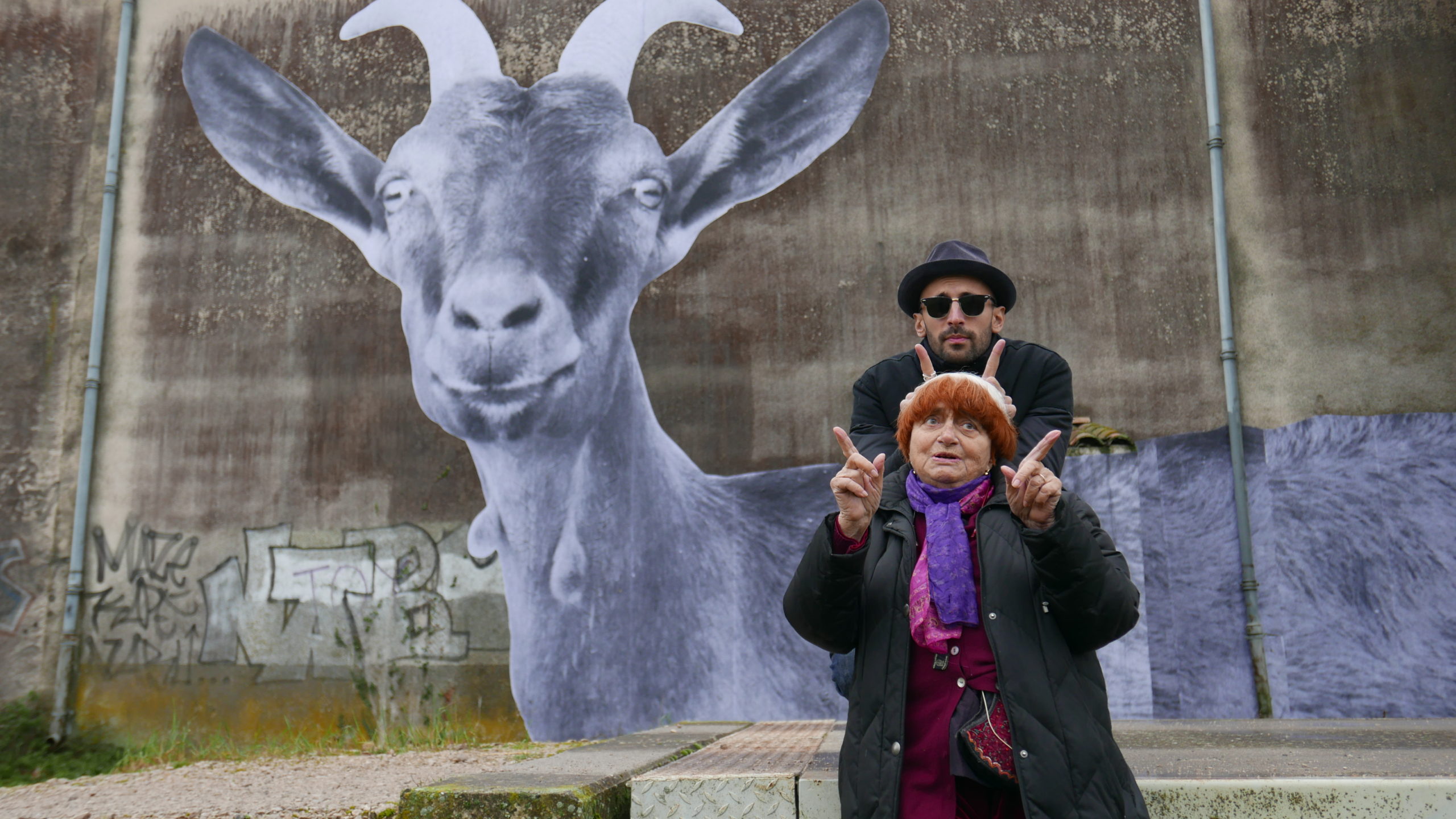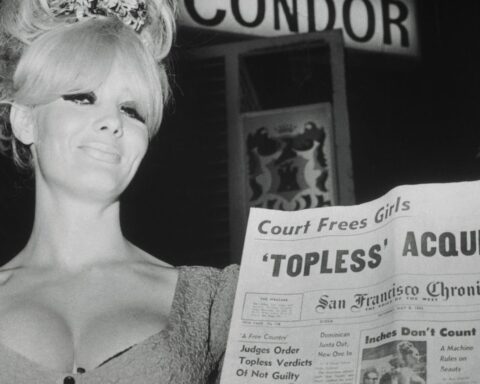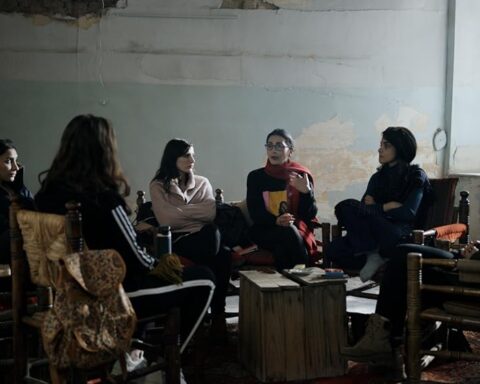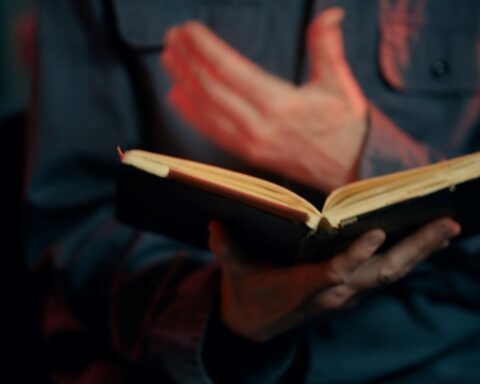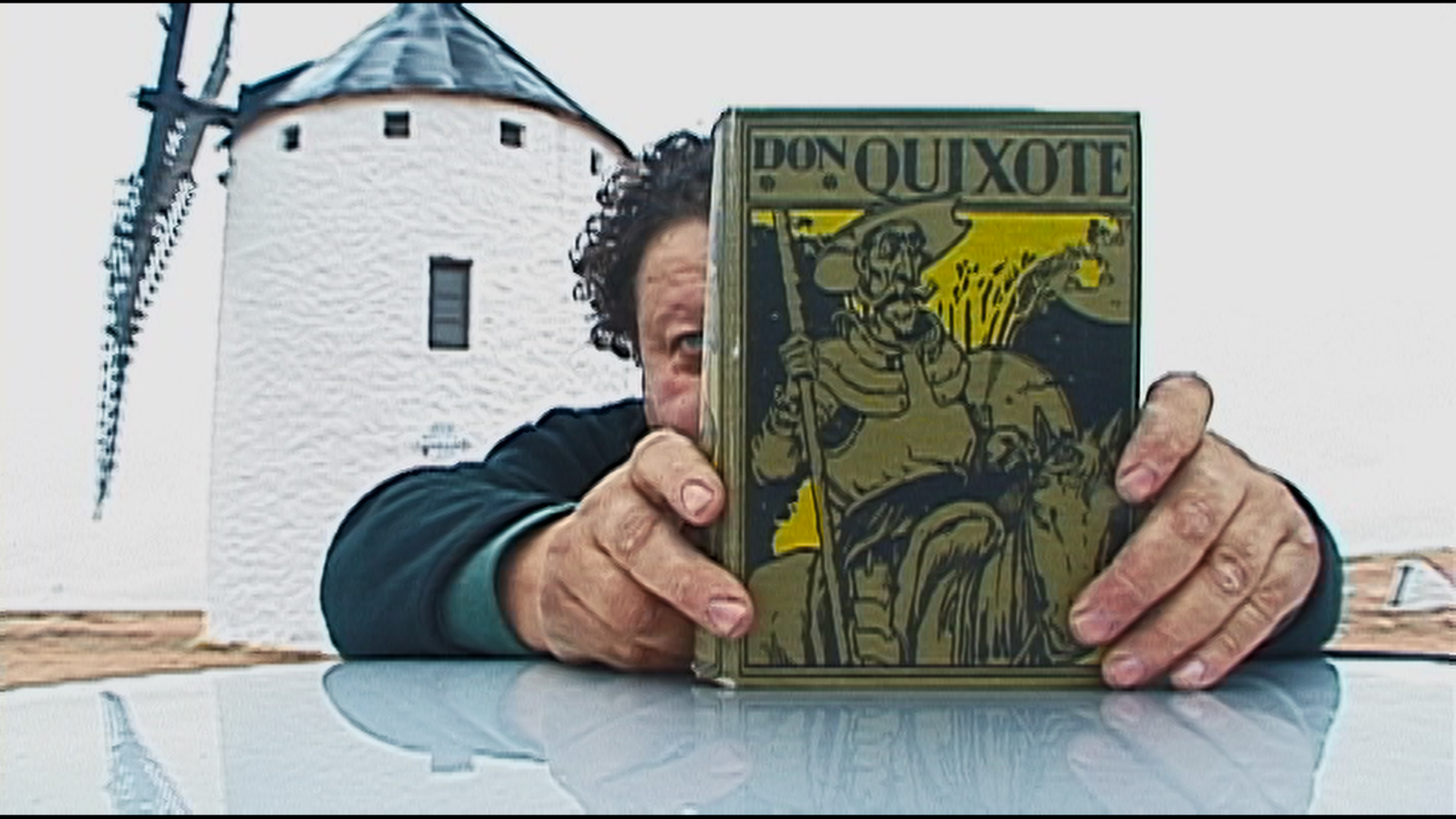“I am a woman, working with her intuition and trying to be intelligent,” Agnès Varda once said about her work. “Finding beauty where it’s maybe not. Seeing.” The act of seeing, and being seen, is at the heart of Varda’s work, in a film and photography career that spanned seventy years, until her death, in 2019, at the age of ninety. She rigorously questioned herself, and therefore us, about what we choose to see, what we dismiss as undeserving of our sight, and what we feel as a result.
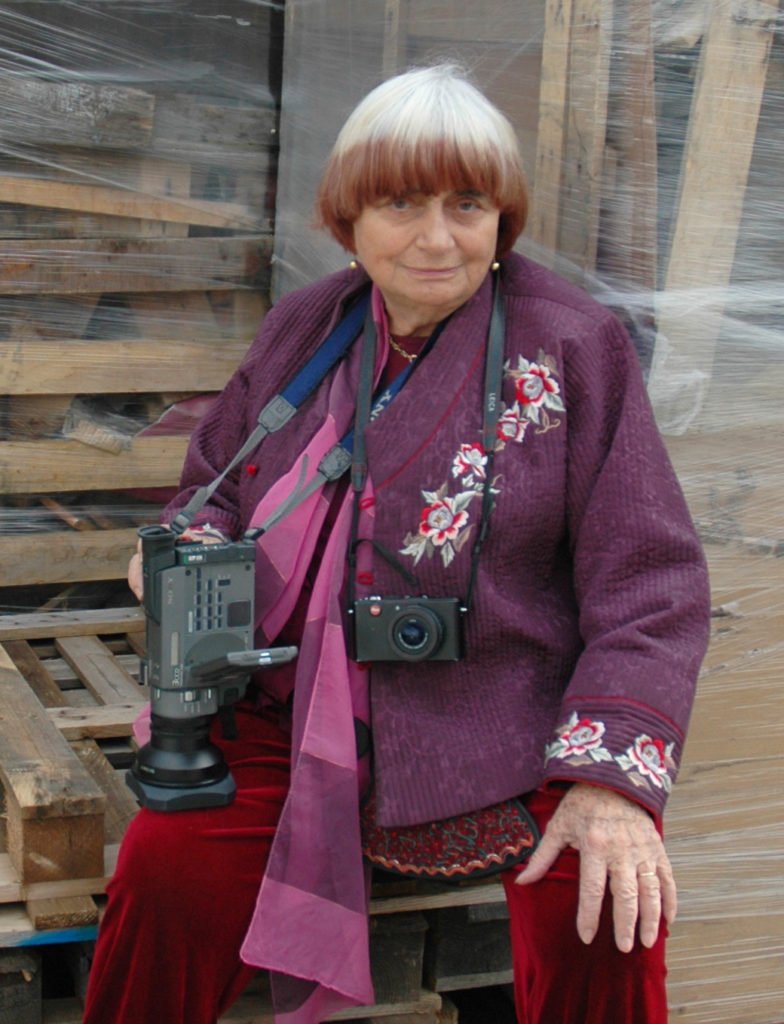
Varda celebrated the beauty of the marginalized, turning her lens on the elderly, indigent, immigrants, and people of colour. Most of all, she focussed on women. She had a distinct point of view, combining a passionate political engagement that encompassed socialism and feminism with a deeply personal exploration of what it means to be alive, and, therefore, vulnerable. Her work, documentary or narrative, feature length or short, was of a piece—”emotion pictures”—one flowing into the other, blurring the lines between life and art. Throughout, the “female gaze” presents itself without fanfare: “I didn’t see myself as a woman doing film but as a radical filmmaker who was a woman. Slightly different.”
Born Arlette Varda in 1928, in Brussels, Belgium, she reinvented herself as Agnès at the age of eighteen, and soon embarked on a career as a photographer. “I take photographs or I make films,” she said. “Or I put films in the photos, or photos in the films.” Her eye for visual composition is evident in her body of work, consisting of almost fifty features and shorts. Varda received many accolades in her lifetime, including an honorary Palme d’Or in 2015, at the Cannes Film Festival, and, two years later, an honorary Academy Award, the first female director to be so awarded. Following is a guide to “essential” Varda.
1. La Pointe Courte (1955)
Varda’s debut film, a black-and-white drama of an unhappy couple, stylistically unlike her later work, owes more to Italian neo-realism than French cinema. Though she went on to be hailed as the “grandmother” of the nouvelle vague, her sensibilities were closer to the experimental Left Bank filmmakers Alain Resnais (who edited the film), Alain Robbe-Grillet, and Chris Marker. With no access to traditional financing sources, Varda funded the production from a small inheritance and a loan from her mother. Cast and crew formed a collective with shares and lived together in a rented house. Bypassing the unions and official hierarchies of French production, Varda started her own production company, Ciné-Tamaris, and, unusual for the time, shot on location with a largely unprofessional cast (save Phillipe Noiret and Silvia Monfort). “So much intellectualism in a young woman,” wrote critic Jacques Sicilar, “is distressing.”
2. Cléo from 5 to 7 (Cléo de 5 à 7) (1962)
Varda’s second feature had the financial backing of Georges de Beauregard, producer of Godard’s Breathless (1960) and Jacques Demy’s Lola (1961). Demy, whom Varda would marry in 1962, suggested her to the producer, who was looking for arthouse filmmakers. The film, shot on location and presented in real time, lets us in on ninety minutes in the life of Cléo (Corinne Marchand) as she awaits the results of a biopsy. “As long as I’m beautiful, I’m alive,” whispers Cléo scrutinizing herself in the mirror. Midway through the film, Cléo turns her gaze outward. “The first feminist gesture,” said Varda, “is to say, ‘OK, they are looking at me, but I am looking at them.’ The act of deciding to look.”
3. Lions Love (…and Lies) (1969)
For hardcore Vardaphiles, Lions Love (…and Lies) is so off-the-wall that it’s necessary viewing. Varda had moved to Los Angeles to join Demy, who was making Model Shop (1969) for Columbia Pictures, and met with the studio about a project, Peace and Love. The studio refused to allow final cut, the film was never made, and Varda, unfettered, went her own way to make Lions Love (…and Lies). Featuring Warhol muse Viva in a ménage-à-trois with Gerome Ragni and James Rado (coauthors/lyricists of Hair), the film’s true star is filmmaker Shirley Clarke playing an avant-garde director in Hollywood. Largely improvised—“a collage,” said Varda—it’s a curious time capsule of L.A. in the late 1960s, including documentary footage of the assassination of Robert Kennedy. Varda, inspired by the politics and youth culture of the time, was fond of California. “I’m not very comfortable in France,” she said. “I’m not intellectual enough for the intellectuals and I’m too smart for the idiots.”
4. Daguerréotypes (1975)
Back in Paris, now with a young son, Varda didn’t want to leave him to work, so she decided to make a film on her street, rue Daguerre. Using her own electricity, she shot only as far as her power cord would reach. The result is a poignant portrait of a community of shopkeepers, and set the style for subsequent documentaries: intimate, relying on chance, and yet rigorously structured. Daughter Rosalie (from a previous relationship) appears in the film, and Varda would continue to cast her children in her work; a pragmatic as well as creative decision, further blurring the lines between life and art. Thirty years later, Varda shot a follow up, as was her practice, Rue Daguerre en 2005. In an inspired sequence, the director is in a salon getting her roots done (a wink to The Gleaners and I [2000]) while reading aloud a letter from shopkeepers on the commercial stretch of rue Daguerre (beyond where the cord stretched). They disliked her focus on the less fashionable end of the street: “We don’t understand the need to tell people how these store owners met and what they dream about,” she reads matter-of-factly. “I hope you won’t subject us to another turkey like that again.”
5. Documenteur: An Emotion Picture (1981)
For much of the ’80s, Varda and Demy were separated (although he lived across the street), and Documenteur, the most poetic of Varda’s films, explores the lonely existence of a single mother. The film, shot in California, stars Sabine Mamou (editor of Demy’s Une chambre en ville and Varda’s Mur murs) as Varda’s alter ego, with Varda and Demy’s eight-year-old son Mathieu Demy as her son. Narrated by Mamou and Varda, they speak about life imitating art and about pain. “I’ve been trying all my life to put into fictional films the texture of documentary,” said Varda, who juxtaposes Mamou retrieving abandoned furniture with verité scenes of people sorting through garbage or folding clothes in the laundromat. The effect is deeply moving, as these supporting players, their weathered faces marked by tumours and missing teeth, are clearly non-actors.
Companion piece: Mur murs (1981)
Visually and to a degree structurally, the seeds of Faces Places (2017) are here in this road movie where vast pieces of street art are integrated into the landscape, intercut with people and the stories depicted in the art. Varda focusses on the rebels, artists, activists, and immigrants who empower themselves through art. Documenteur, said Varda, “is the shadow of Mur murs”; the two share several images, including Mamou and young Mathieu Demy in front of a large mural as the opening scene of Documenteur and the closing of Mur murs.
6. Sans toi ni loi (Vagabond) (1985)
Arguably her masterpiece of fiction, awarded the prestigious Golden Lion at the Venice Film Festival, Sans toit ni loi (“without shelter nor law”) recounts the death of Mona, a young female drifter played by seventeen-year-old Sandrine Bonnaire. Inspired by reports of the “new poor” and an encounter with a female hitchhiker, Varda infused the film with documentary realism, including largely unprofessional actors. Financed by a grant from the Ministry of Culture “based on a two-page proposal,” Varda avoided “all the bureaucratic channels that usually turn me down… It’s not as though I’m a persona non grata culturala. I’m just a marginal figure and that upsets them.” The grant was enough to get started, a third of the budget, “with the rest [coming] from borrowed money and calculated risks.” Late in production, Varda decided to structure the film around a series of tracking shots as Mona progresses to her inevitable demise, sustaining the tension with an emotional undercurrent that never erupts; the result is a devastating portrait of loneliness and despair.
7. Jane B. par Agnès V. (1988)
Early on in Jane B. par Agnès V., the director questions iconic model, actor, and singer Jane Birkin’s reluctance to look into the lens of the camera. “It’s too personal,” says Birkin. “It could be a trap.” Varda insists, and casts Birkin, the collaborator and wife of the notorious singer Serge Gainsbourg, as the artist’s muse, recreating famous paintings, lovingly sweeping the camera along her long, lean, and at times naked body. Birkin gazes into the camera, raising the question, “Who is regarding whom?”
Companion piece: Kung-fu Master! (1988)
At the end of Jane B. par Agnès V., Birkin and Varda discuss a potential film scenario about a lonely woman in love with a young boy. That movie, Kung-fu Master!, presents the amour fou between a woman, Birkin, and a teenaged boy, played by Mathieu Demy. The film would set off alarm bells today—she’s forty, he’s fourteen—but Varda and Birkin were flipping the French trope of the romance between an older man and an adolescent girl to explore the story of a mature woman questioning her desirability. Varda, approaching sixty at the time, was struggling with her own existential crisis. She had reunited with Jacques Demy, who had contracted AIDS; in a curious scene, Birkin and family watch the news, with a reporter pronouncing on the fate of a woman in love with an HIV positive man: “(If ) Sharon sleeps with Barry, she will, in effect, be sleeping with everyone he slept with in the past eight years, and, in a few years, she could be dead.” Later, at an AIDS rally, activists ask passers-by, “Are you ready to die for love?”
8. Jacquot de Nantes (1991)
A poignant love letter to Demy in the last year of his life, Jacquot de Nantes dramatizes his childhood memories with documentary interludes of the dying artist. Demy was too ill to make the film himself, so Varda quickly gathered a small crew and shot a drama hybrid. His intimate circle knew he was dying of AIDS but he chose not to speak about it. Varda later stated she wanted him to speak out but there was too much stigma and shame in 1989. “All I could do was stay by his side, be as close as possible,” she said. “As a filmmaker, my only option was to film him in extreme closeup: his skin, his eye, his hair like a landscape, his hands, his spots. I needed to do this, take these images of him, his very matter. Jacques dying but Jacques still alive.” The shoot finished on October 17, 1990. Demy died ten days later. Jacquot de Nantes would mark the end of a chapter in Varda’s life and the beginning of another, which would yield her greatest work: the autobiographical triptych of The Gleaners and I, The Beaches of Agnès, and Faces Place, an extended meditation on grief and mortality. “Fiction films are beautiful,” she later said, “but documentaries put you at peace with the world. You try to make the world understandable.”
9. The Gleaners and I (Les Glaneurs et la Glaneuse) (2000)
Originally conceived as a four-part TV series (turned down by the prestigious broadcaster Arté), then as a fifty-two-minute documentary, The Gleaners and I evolved into a feature-length road movie. A humanistic treatise on the homeless, Varda sought out the destitute that rely on the residual pickings of farm fields or outdoor markets for survival and juxtaposed them with a Michelin-starred chef who eschews waste on principle and a vineyard owner who prohibits access to his leftover grapes. She playfully re-enacts the nineteenth-century painter Jules Breton’s Woman Gleaning, posing with a sheaf of wheat, then happily exchanges it for her digital camera, which becomes, in her hands, not only a paintbrush adding texture to the film, but also a witness to her mortality. Varda examines her own greying hair and liver spotted hands as she had done with Demy before his death (an unconscious parallel, she recognized later). “It’s not old age, my enemy,” she observes, “it might even be old age, my friend. But still, my hair and my hands keep telling me that the end is near.”
10. The Beaches of Agnès (Les plages d’Agnès) (2009)
“While I live, I remember,” says Varda, in this, her most autobiographical film. As much about memory as its constructs, the director reminds us she is “playing the role of a little old lady, pleasantly plump and talkative, telling her life story.” Nevertheless, Varda is at her most vulnerable here, recalling the pain of Demy’s death, repeating a sequence originally from Jacquot de Nantes: “It feels better to grow old together. That was our plan, even more so when we got back together,” she narrates, “and boom! Jacques fell ill. A fatal disease.” She then continues with additional narration, speaking more freely now: “Jacques was dying, he knew he was dying, he knew AIDS was incurable… No one spoke about it. It was a kind of affectionate silence.” Interspersed with fanciful sets constructed on the beach, then trucking in sand to bring the beach to rue Daguerre, she recounts her life in vignettes, juxtaposed with excerpts of her films and observations ranging from sexual desire to mortality. “All the dead lead me back to Jacques,” she says. “He is the most cherished of the dead.” In one touching yet strangely comical sequence, Varda joins a protest march, bearing her own placard: “I feel pain everywhere.” In another, ever the survivor, she dances, then dons a potato costume, beautifully balancing the sorrows and joys of life as she celebrates her artistic rejuvenation from the success of The Gleaners and I.
11. Faces Places (Visages, villages) (2017)
A visually stunning collaboration with large-scale street photographer JR, Varda adopts the road movie approach of The Gleaners and I (and, to a lesser extent, Murs murs) to set out with JR on their own Merry Pranksters adventure, photographing working class heroes en route. The pairing of Varda and JR is inspired. They are kindred spirits, and he reminds her, with his ever-present sunglasses, of Jean-Luc Godard. The film is scored by Jacques Demy collaborator Michel Legrand (The Umbrellas of Cherboug, The Young Girls of Rochefort) and Demy’s presence—or is it absence?—is keenly felt throughout. In an emotionally charged sequence, when Varda is stood up by Godard, she is overcome by emotion, grieving the pain of loss, and the remembrance of things past.
12. Varda par Agnès (2019)
Based on a series of master classes by Varda, this is not so much a film as a coda, a revisiting of her oeuvre to reveal her working methods. The artist is powerfully present here, guiding us toward a different way of seeing. Varda, the collector of assorted objects and photographs, becomes Varda, the cinematic gleaner, using and repurposing what she beholds through her lens, finding beauty in the ordinary, and rendering it extraordinary. “It’s a way of saying goodbye,” said Varda at the film’s world premiere at the Berlin Film Festival last year, a month before her passing. “I have to prepare myself to say goodbye and to go away. It’s fine.”
Socialism and cha-cha-cha: Selected Shorts (1958-2004)
Varda made many remarkable shorts throughout her career. They served as creative fuel for the larger works, and also stand alone.
L’Opéra mouffe (1958)
Her first short, shot while pregnant with daughter Rosalie, opens with a black and white image of the director’s naked, fully rounded body. The nude—female and male—is a recurring motif in Varda’s work, an expression of passion, sensuality, liberation, and intimacy. Her films are almost tactile in their tenderness.
Salut les Cubains (1964)
An impressive montage (à la Chris Marker) of 1500 black-and-white photos culled from thousands taken in Cuba, Salut les Cubains is at times edited à la stop-motion animation to create a buoyant sense of rhythm and movement. “Socialism and cha-cha-cha,” said Varda, “is more fun than socialism with Russian melodies.”
Uncle Yanco (1967)
In Uncle Yanco, Varda seeks out long lost relative, Jean “Yanco” Varda, a free spirit living in a houseboat off Sausalito. Re-enacting their first meeting, she cleverly breaks the documentary wall (in which encounters between subjects are often staged but not acknowledged as such) by playfully repeating several takes, reminding the viewer this is a documentary but also a construction of reality.
Black Panthers (1968)
Shot in the summer of 1968 in Oakland, California, Black Panthers documents the protests to free Black Panther leader Huey P. Newton. Conventional in style and tone, the film is voiced by an unnamed narrator, presumably photographer Eve Crane (who worked on the film and had unprecedented access to the Panthers through her friendship with Eldridge Cleaver). Although lacking Varda’s personal touch, the access to the Panthers is compelling.
Ulysse (1982)
In 1954, Varda took a photo of a man and a young boy, both naked, on a beach next to a dead goat. Twenty-eight years later, Varda sought the pair out: the man, Fouli Elia, became an editor at Paris Elle; the boy, Ulysse, a bookstore owner in Paris. She asks Ulysse what he recalls of the session. The tension is discernible—it was a painful time in his life—but Varda gently prods him. By the end, she reflects on the meaning of life vis-à-vis the photograph: “You see anything you want in it. An image is this and more.”
7p., cuis., s. de b., … à saisir (1984)
7p., cuis., s. de b., … à saisir presents a series of dreamlike, staged scenarios about a house and its ghosts, perhaps the most startling of which is an image of an elderly woman seated, naked, outside, while snow—feathers, really—falls around her.
Ydessa, the Bears, and etc. (2004)
A portrait of Toronto curator-artist Ydessa Hendeles and her large-scale photo exhibit, Partners (The Teddy Bear Project), comprised of 3000 vintage photographs. A child of Auschwitz survivors, Hendeles described the work as “a post-Holocaust” document. “Is it a childhood memory which has become an obsession, or a gimmick?” asks Varda. “I had to talk to this woman to find out.” The woman in question—long, flaming red hair, dressed entirely in black, a Morticia Addams in Technicolor—enters a bare white room and gazes into the lens. Varda applauds her for her passion and rigorousness, yet, ever the socialist, shows Hendeles pulling up in her burgundy Citroën and remarks, after a tour of her eighteen-room mansion, that she is overcome by the enormity of the kitchen, the project, and the length of Ydessa’s red hair.




